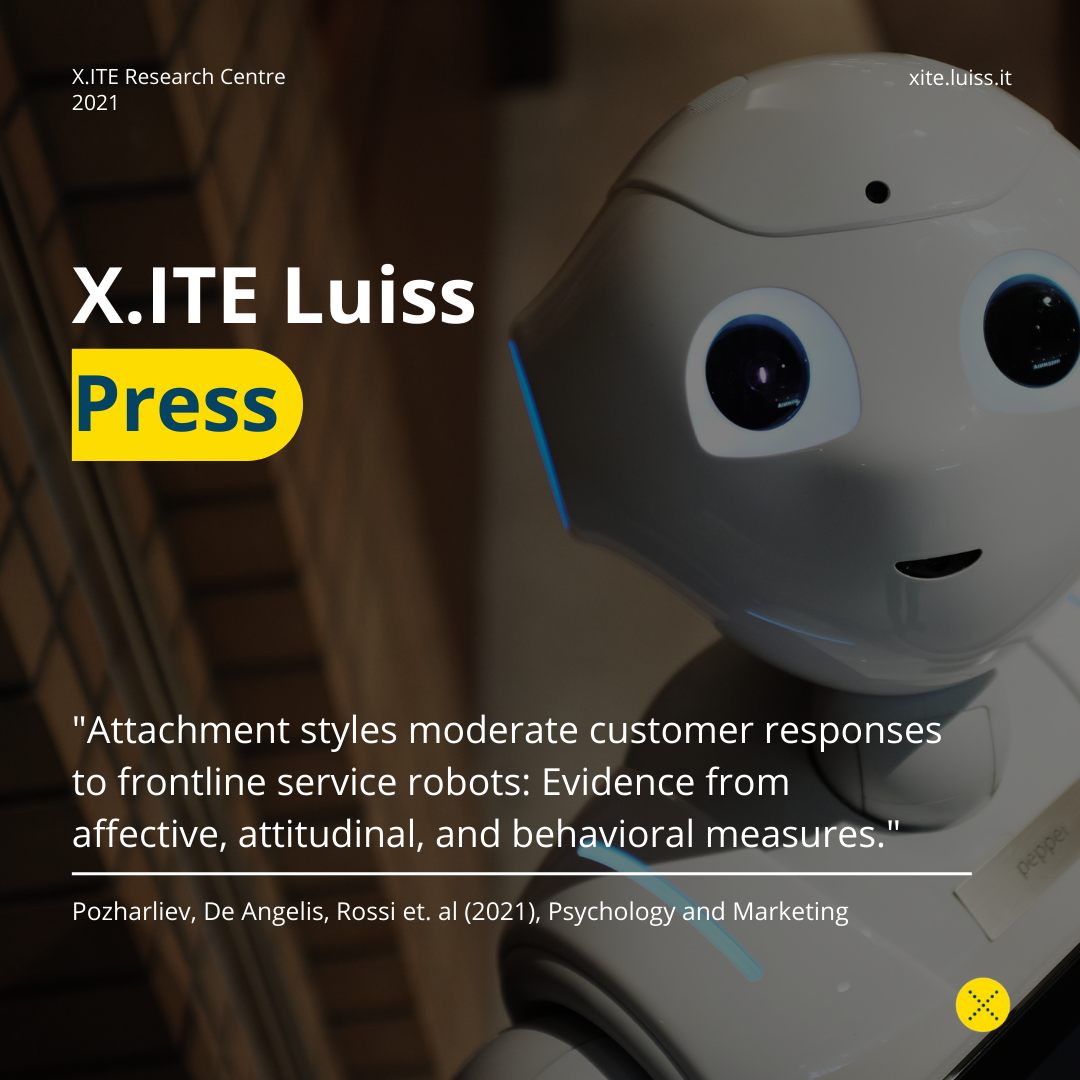The global service robotics market was valued at $11.48 billion in 2018 and is expected to reach almost $24 billion by 2022 and $51 billion by 2024, at a compound annual growth rate of more than 25% over the forecasted period of 2019-2024 (marketresearchengine.com). Frontline service robots have the capacity to improve many facets of a service, including efficiency, in service locations where the type of customer interactions is repetitive in nature or services where customers may be indifferent to social-emotional and relational elements. However, customer acceptance of human-robot interaction in the service industry is still low, with most people still preferring to interact with humans. Thus, one of the most important challenges for marketers is understanding in depth customers’ responses to service robots and what situations can be most appropriate for incorporating successfully service robots in their interactions with customers. Notably, marketing researchers have grown more interested in this topic, but produced mixed results.
The article of Luiss X.ITE’s research team composed of Rumen Pozharliev, Matteo De Angelis and Dario Rossi et al. (2021), published in Psychology & Marketing, studies the effect of human-robot interactions in service settings by investigating the role of individuals’ attachment style, which describes the systematic pattern of affective and intentional responses in a human-human interaction. Authors suggest that individual attachment styles, defined as working models of how people behave in social interactions might be particularly relevant to understanding customers’ physiological, affective, attitudinal and behavioral responses to interactions with frontline service robots. The core premise of the present work is that in some cases frontline service robots might elicit affective and attitudinal responses that approximate the social responses typical of human-human interaction. Thus, authors argue that individual working models of behavior in social interactions with humans (i.e., attachment styles) may apply to human-robot service interaction and thus influence customers’ affective and attitudinal responses toward frontline (social) service robots. Results of three experimental studies show that: (1) customers scoring low on the anxious attachment scale report an increase in customer satisfaction in relation to a human (vs. robot) service agent; (2) that the customers scoring low on anxious attachment scale are more satisfied with human service agents compared to service robots even when the human voice of the robot is replaced by a robotic voice; (3) the effects shown in the previous studies extend to customers’ behavioral responses (word-of-mouth). Study 3 also showed that customers manifested higher perceived empathy and intention to spread positive WOM for the interaction with the human (vs. frontline robot) service agent.
The results of this study have actionable managerial implications. First, marketers might consider anxious attachment style as a criterion for better segmenting their target markets. Second, in terms of targeting customers, marketing managers should initially focus only on customers who score high on the anxious attachment scale, because these customers might respond more favourably to service robots replacing human service agents. Third, in terms of marketing communication, service offerings targeting customers who score low on anxious attachment style should be framed around more emotional and experiential themes that (1) depict service robots that care about customers (e.g., artificial empathy), (2) show shopping scenarios where customers are laughing and having fun alongside a robot companion or (3) illustrate customer situations where humans feel empathy for service robots. Fourth, the present studies reveal that customers with a low anxious attachment style score should be allowed to select their preferred type of service agent. Finally, marketers should be aware that moderating role of customers’ anxious attachment style score on their affective, attitudinal and behavioral responses to frontline service robots was not affected by the tangential differences in robot design features (e.g. voice type and level of human-like physical appearance).



